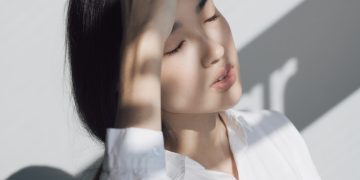Skincare is an essential aspect of personal grooming and self-care, and it becomes even more important during puberty. As girls reach the age of 13, they begin to experience a host of changes in their bodies, including changes in their skin. During this stage of development, it’s crucial for girls to establish a skincare routine that will help keep their skin healthy and looking its best. Skincare is not only about looking good, but also about taking care of the largest organ in the body, the skin. Proper skincare can help prevent and manage common skin issues such as acne, dryness, and sun damage, which can be particularly prevalent during puberty. In this article, we will discuss the basics of skincare for 13-year-old girls, including what products and techniques are most effective for this age group.
Understanding the Skin
During puberty, girls’ bodies begin to produce more hormones, particularly androgens, which can lead to a number of changes in the skin. One of the most common changes is an increase in oil production, which can make the skin more prone to acne. In addition, the skin’s cells begin to turn over more quickly, which can lead to clogged pores and the formation of blackheads and whiteheads.
Another change that occurs during puberty is an increase in the size of the sebaceous glands, which can lead to the development of larger, more visible pores. Additionally, hormonal changes during puberty can cause the skin to become more sensitive and reactive, making it more susceptible to irritation and inflammation.
It is important to use gentle, non-irritating products that are appropriate for a teenager’s skin type. This includes using non-foaming cleansers that won’t strip the skin of its natural oils, and oil-free moisturizers that are lightweight and non-greasy. It’s also important to avoid using harsh, abrasive exfoliants, as they can cause irritation and dryness. Using products specifically formulated for teenage skin can help keep the skin balanced and healthy.
It is also important to note that every skin type is unique and what works for one person may not work for another. It is recommended to consult with a dermatologist or skincare professional to get personalized recommendations based on individual’s skin type and concerns.
Best Skincare Routine For 13-year-old Girls
The Best skincare routine for 13-year-old girls should include the following steps:
- Cleanse twice daily (morning and night) with a gentle, non-foaming cleanser that is formulated for teenage skin.
- Tone the skin with a toner that is appropriate for teenage skin, such as one that contains Salicylic acid or Glycolic acid to help unclog pores and reduce the appearance of acne.
- Apply a lightweight, oil-free moisturizer twice daily (morning and night) to help maintain the skin’s barrier function and keep it hydrated.
- Apply a sunscreen with at least SPF 30 daily, and reapply as needed throughout the day.
- Use over-the-counter acne treatments, such as those containing Salicylic acid, Benzoyl peroxide, or Alpha Hydroxy acids (AHAs) as needed to help reduce the appearance of acne.
- Avoid picking or squeezing pimples, as this can lead to further inflammation, infection, and scarring.
- Incorporate healthy lifestyle habits such as eating a balanced diet and getting enough rest, which can also help to reduce the likelihood of developing acne.
It’s also important to note that every skin type is unique and what works for one person may not work for another. It’s recommended to consult with a dermatologist or skincare professional for personalized recommendations based on individual’s skin type and concerns.
Cleanse
Cleansing is an essential step in any skincare routine, especially for teenage girls. Regular cleansing helps to remove dirt, oil, and makeup that can accumulate on the skin throughout the day. This can help to prevent clogged pores, acne, and other skin issues.
It’s important to use a gentle, non-foaming cleanser that won’t strip the skin of its natural oils. Foaming cleansers can be harsh and drying, which can disrupt the skin’s natural balance and lead to irritation and dryness. Instead, opt for a gentle, non-foaming cleanser that is formulated for teenage skin.
Some examples of gentle, non-foaming cleansers include:
-Cleansers that are specifically formulated for acne-prone skin
-Cleansers that are formulated with Salicylic acid or Benzoyl peroxide that can help to unclog pores and prevent acne
-Cleansers that are formulated with gentle ingredients like aloe vera, chamomile, or green tea that can help to soothe the skin
-Cleansers that are formulated with hyaluronic acid or glycerin to help retain moisture in the skin
It’s important to cleanse the face twice daily, once in the morning and once at night before going to bed. This helps to remove the dirt, oil, and makeup that can accumulate on the skin throughout the day and night, keeping the skin clean, refreshed, and healthy.
Moisturize
Moisturizing is an important step in any skincare routine, as it helps to maintain the skin’s barrier function and keep it hydrated. The skin’s barrier function is responsible for keeping moisture in and harmful substances out, and a healthy barrier function can help to keep the skin looking and feeling smooth, plump, and hydrated.
However, when choosing a moisturizer, it’s important to choose one that is appropriate for a teenager’s skin type, particularly for those with acne-prone skin. Heavy, oily moisturizers can clog pores and exacerbate acne. Instead, opt for a lightweight, oil-free moisturizer that is formulated for teenage skin.
Some examples of lightweight, oil-free moisturizers include:
-Moisturizers that are formulated with Salicylic acid or Benzoyl peroxide that can help to unclog pores and prevent acne
-Moisturizers that are formulated with hyaluronic acid or glycerin to help retain moisture in the skin
-Moisturizers that are specifically formulated for acne-prone skin
-Moisturizers that are formulated with aloe vera, chamomile, or green tea that can help to soothe the skin
It’s important to moisturize the face twice daily, once in the morning and once at night before going to bed. This helps to keep the skin hydrated and healthy, and can help to prevent dryness, flakiness, and other common skin issues.
Sun Protection
Sun protection is an important aspect of skincare, especially for teenage girls. The sun’s ultraviolet (UV) rays can cause a number of problems for the skin, including sunburn, premature aging, and an increased risk of skin cancer.
To protect the skin from the sun’s harmful UV rays, it’s important to use a sunscreen with at least SPF 30, and to reapply it throughout the day, especially if you are going to be spending extended periods of time outdoors. Sunscreen should be applied to all exposed skin, including the face, neck, ears, and hands.
It’s also important to choose a sunscreen that is appropriate for teenage skin, particularly for those with acne-prone skin. Heavy, oily sunscreens can clog pores and exacerbate acne. Instead, opt for a lightweight, oil-free sunscreen that is formulated for teenage skin.
Some examples of lightweight, oil-free sunscreens include:
-Sunscreen that are formulated with physical blockers such as zinc oxide or titanium dioxide
-Sunscreen that are non-comedogenic and non-acnegenic
-Sunscreen that are formulated with hyaluronic acid or glycerin to help retain moisture in the skin
-Sunscreen that are water-resistant and sweat-proof
In addition to using sunscreen, it’s also important to seek shade during the sun’s peak hours, typically between 10 am and 4 pm, and to wear protective clothing such as hats, sunglasses, and long-sleeved shirts.
Acne Management
Acne is a common skin condition that affects many teenagers, including 13-year-old girls. Acne is caused by a combination of factors, including an increase in hormones during puberty, an increase in oil production, and a buildup of dead skin cells that can clog pores.
Proper acne management is important to prevent the development of acne and to reduce the appearance of existing acne. This includes using over-the-counter acne treatments that contain active ingredients such as Salicylic acid, Benzoyl peroxide, or Alpha Hydroxy acids (AHAs) that can help to unclog pores and reduce the appearance of acne.
It is also important to avoid picking or squeezing pimples, as this can lead to further inflammation, infection, and scarring. Instead, gently cleanse the skin, use over-the-counter acne treatments, and keep the skin moisturized to help reduce the appearance of acne.
It is also important to note that every skin type is unique and what works for one person may not work for another. It is recommended to consult with a dermatologist or skincare professional to get personalized recommendations based on individual’s skin type and concerns.
Additionally, maintaining a healthy lifestyle, eating a balanced diet, and getting enough rest can also help to reduce the likelihood of developing acne.
Well-regarded Skincare Brands For 13-year-old Girls: Gentle & Effective Recommendations
Cetaphil: Cetaphil is known for its gentle and effective skincare products suitable for all skin types, including young and sensitive skin.
Neutrogena: Neutrogena offers a wide range of skincare products, including cleansers, moisturizers, and sunscreens, designed for teenagers.
Aveeno: Aveeno’s products often contain nourishing and natural ingredients, making them suitable for young skin.
La Roche-Posay: This brand offers skincare products specially formulated for sensitive skin, which can be great for teenagers.
CeraVe: CeraVe’s products are designed with dermatologists and are known for their gentle and hydrating formulations.
Eucerin: Eucerin provides a variety of skincare products, including gentle cleansers and moisturizers for young skin.
Simple: As the name suggests, Simple offers straightforward and gentle skincare products suitable for teenagers with sensitive skin.
When choosing specific products, it’s essential to consider individual skin type and any specific skin concerns 13 girls might have (e.g., acne, dryness, sensitivity). Always check the product labels and look for those labeled as “for sensitive skin” or “gentle” to ensure they are appropriate for age. Additionally, you can consult with a dermatologist or skincare professional for personalized recommendations based on her unique needs.
Conclusion
In conclusion, proper skincare is essential for 13-year-old girls as they go through the changes of puberty. A good skincare routine should include regular cleansing, moisturizing, sun protection and acne management. It is important to understand the skin changes that occur during puberty and to use gentle, non-irritating products that are appropriate for a teenager’s skin type.
It’s important to remember that every skin type is unique, and what works for one person may not work for another. A dermatologist or skincare professional can provide personalized recommendations based on individual’s skin type and concerns. They can also help to identify and treat any underlying skin conditions that may be causing or exacerbating acne or other skin issues.
To summarize, proper skincare can help to keep teenage skin healthy and looking its best. By following a consistent skincare routine that includes cleansing, moisturizing, sun protection, and acne management, 13-year-old girls can help to prevent and manage common skin issues that can occur during puberty.


























